waste upcycling
The reuse of discarded components allows material to be saved from the landfill and the manufacturing of new components to be prevented. Still, reuse is only worthwhile if it reclaims the technology originally embedded in the material in the best way possible, turning a moral issue into an engineering one. This engineering issue is of a new kind: instead of detailing components from a predefined system, the system must be found from predefined components whose composition and past history is unknown. The overall stability of the new system must be ensured although inner mechanical characteristics of components remain partially unspecified.
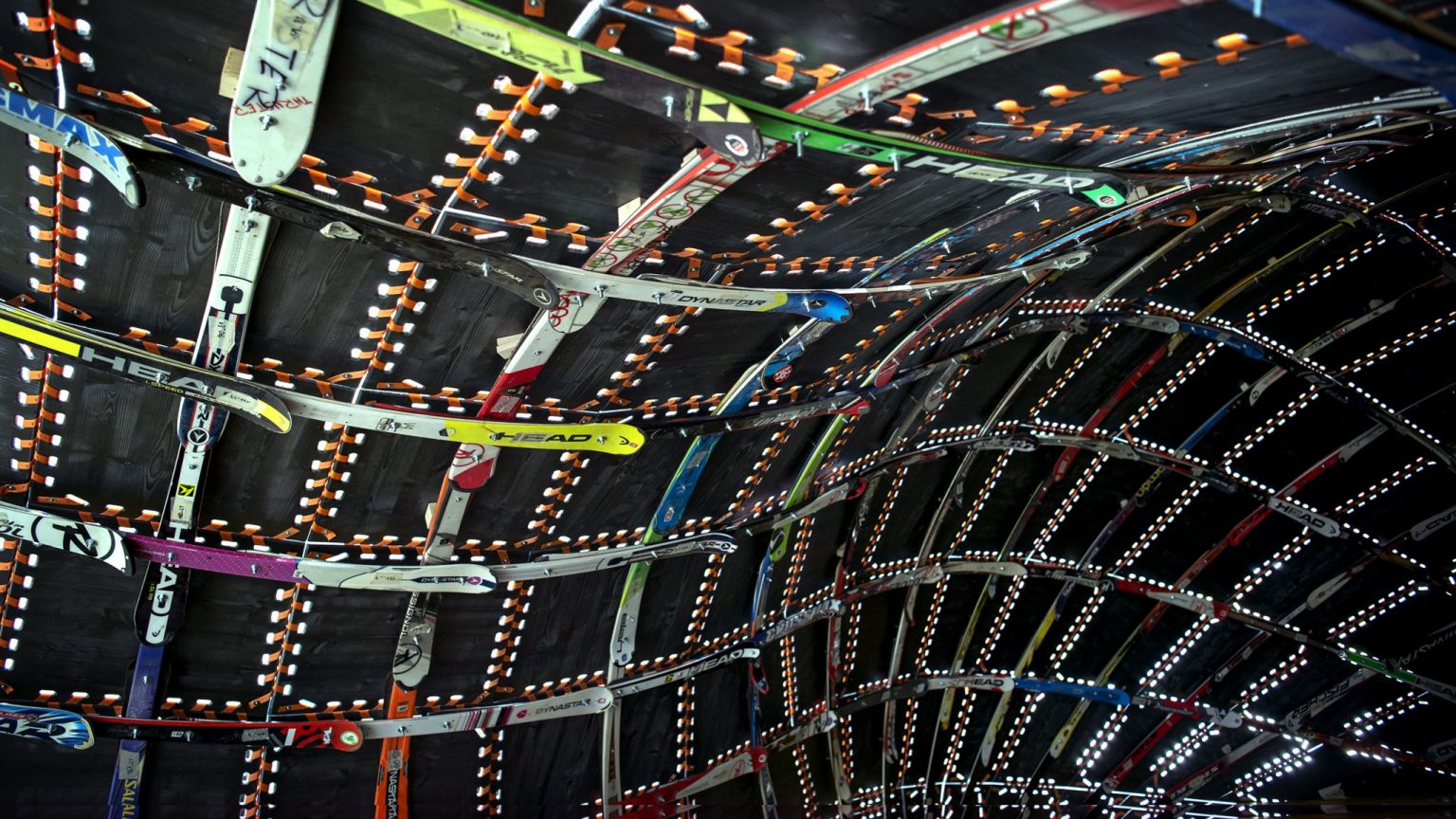
GeoGami pavilion, Smart Living Lab, 2021.
We have designed and constructed to pavilions with reclaimed skis:
The GeoGami pavilion (summer 2021)
The GeoGami pavilion is a blend of differential geometry, upcycling reuse, and digital fabrication. It consists in GEOdesic lines of reclaimed skis working in collaboration with a discrete Voss surface of laced timber panels, smoothly unfolded like an oriGAMI.
The pavilion is a demonstration that careful structural design and computational methods can help recover the technology embedded in waste, in unforeseen ways, hence creating new circular flows.
Due to their composite nature, skis are waste that is rarely valued, except for energy recovery through incineration. Yet, their unique mechanical behavior, i.e. good bending behavior in one direction and great stiffness in the other one, is comparable to timber laths used in conventional elastic gridshells. The form-finding process ensures that the curves of skis can be assembled from initially straight lines, that there is no torsion in the skis, that every intersecting lines of skis present a flat contact, that the edges of adjacent quad panels perfectly coincide, and that series of panels can be assembled folded, flat on the ground and fit the freeform geometry of the gridshell once unfolded.
- Nicolas Montagne (design and construction lead)
- Corentin Fivet, Olivier Baverel, Cyril Douthe (direction)
- Maxence Grangeot, Charles Haskell, Claude-Alain Jacot, Krittika Walia (construction & pictures)
- Sofia Villegas, Barbara Lambec (additional pictures)
- Atelier PopUp, Smart Living Lab (facility)
- Structural Xploration Lab and Laboratoire Navier, Ecole des Ponts, ParisTech) / Thinkshell (institutions)
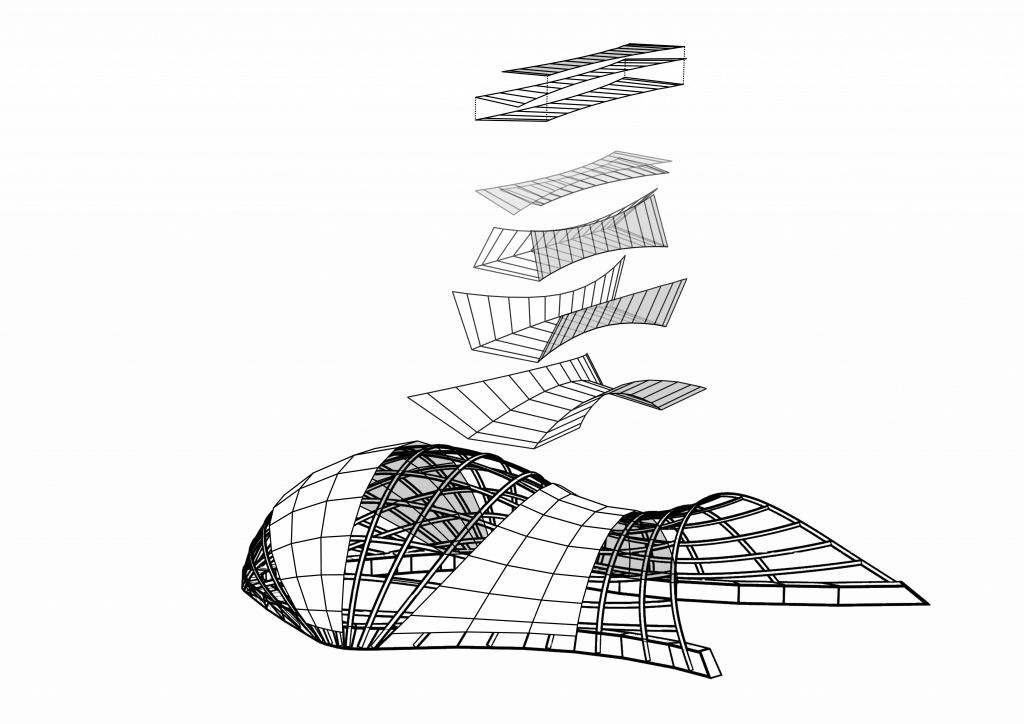
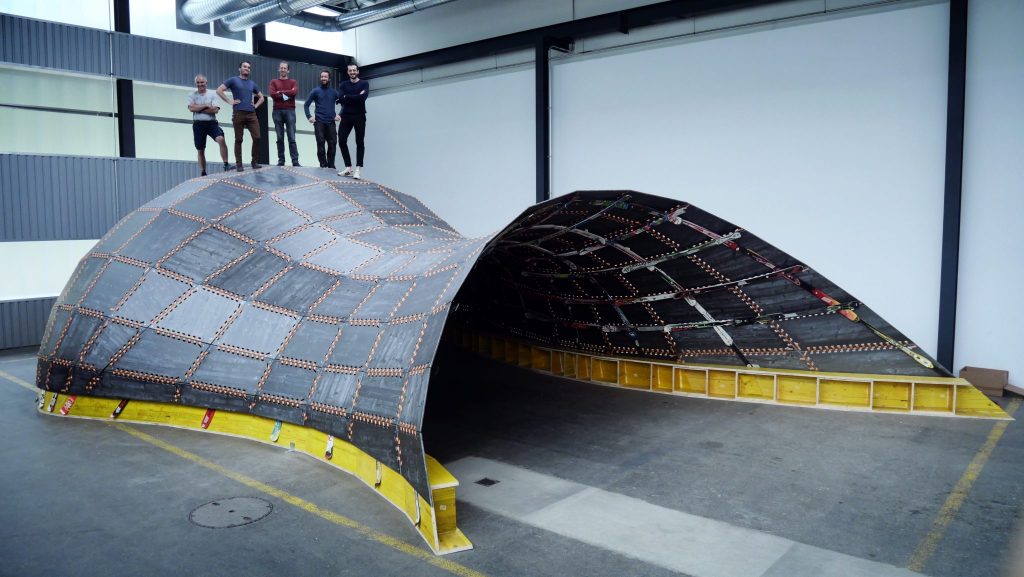
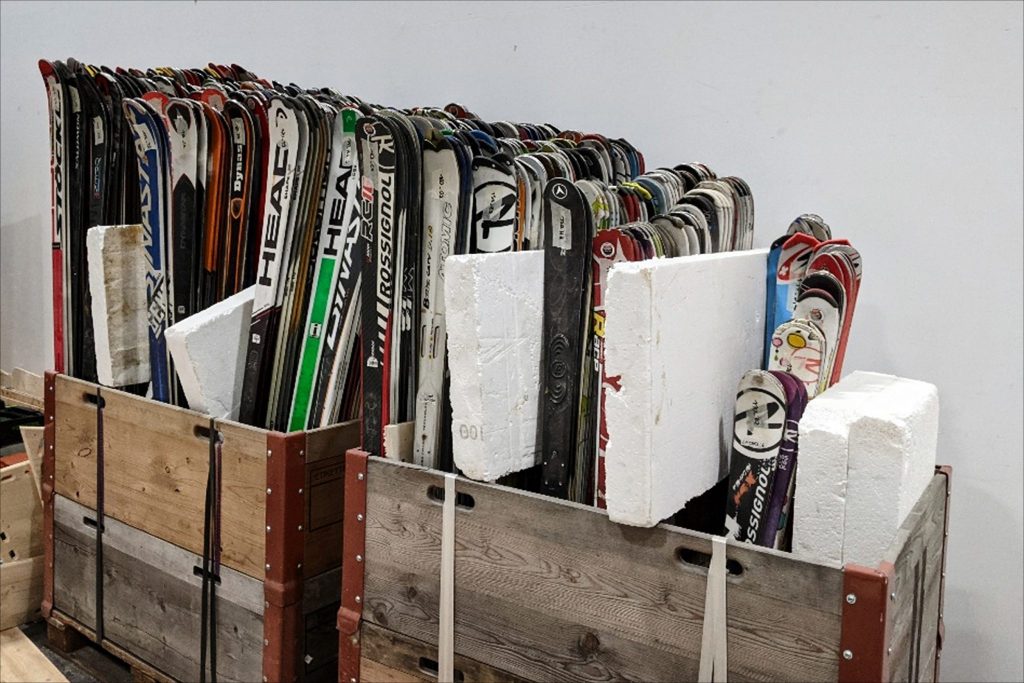
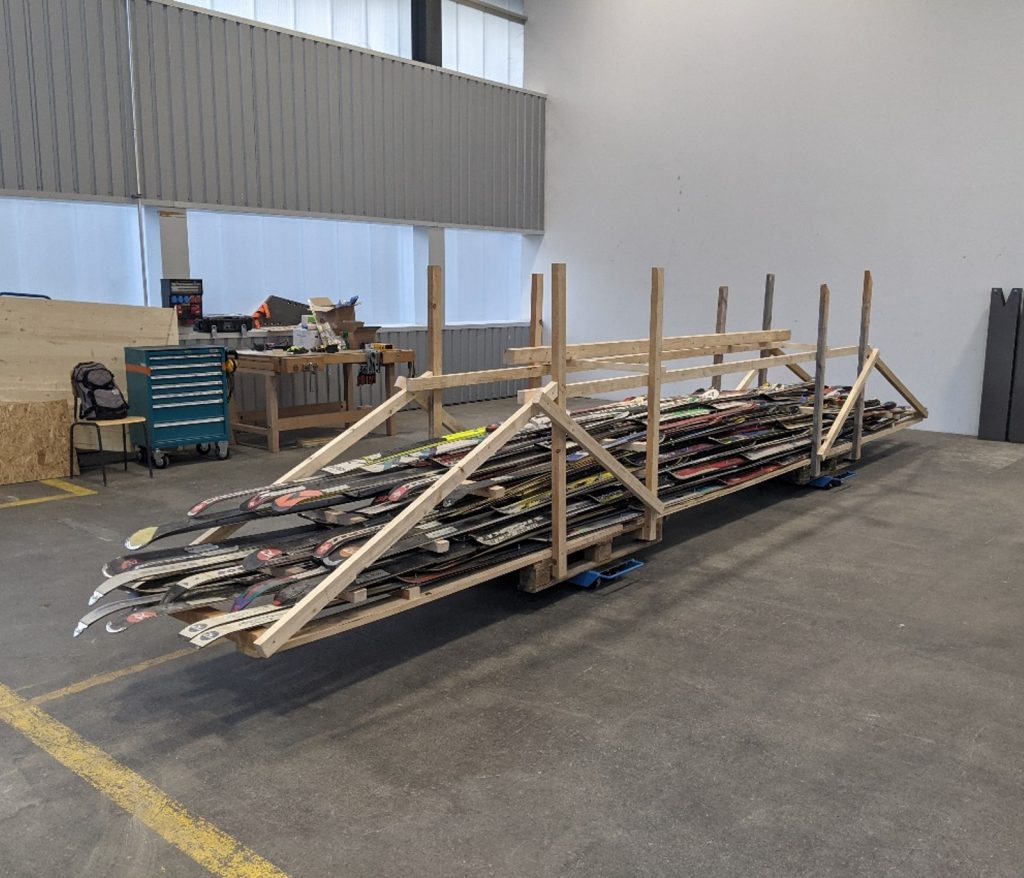
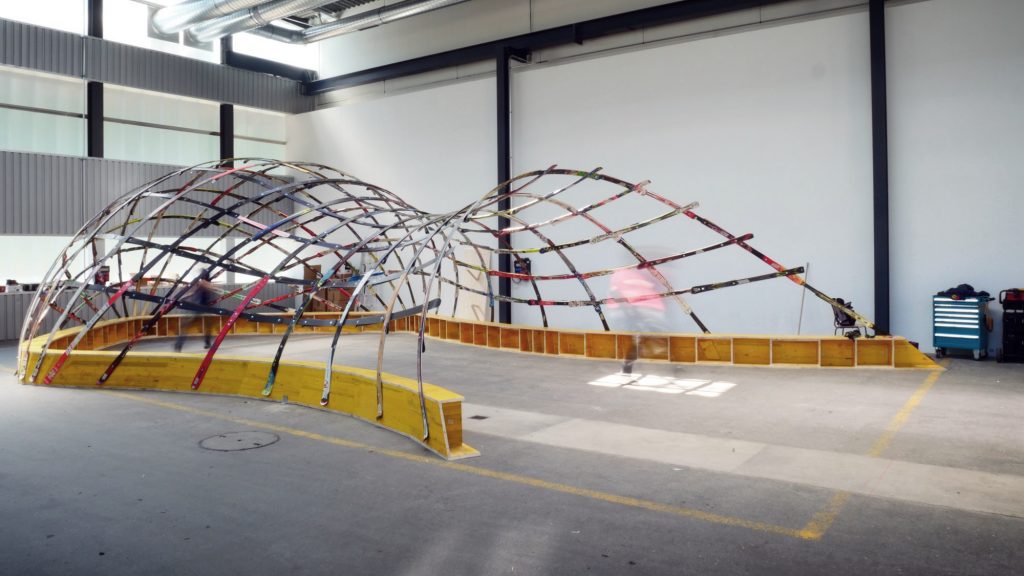
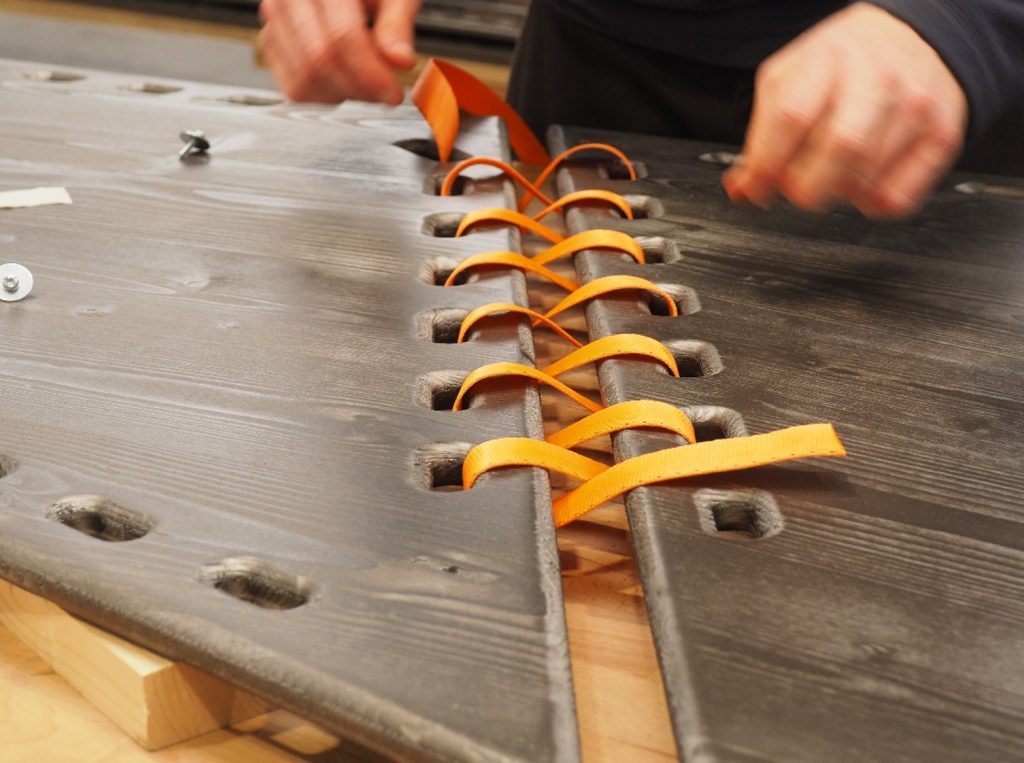
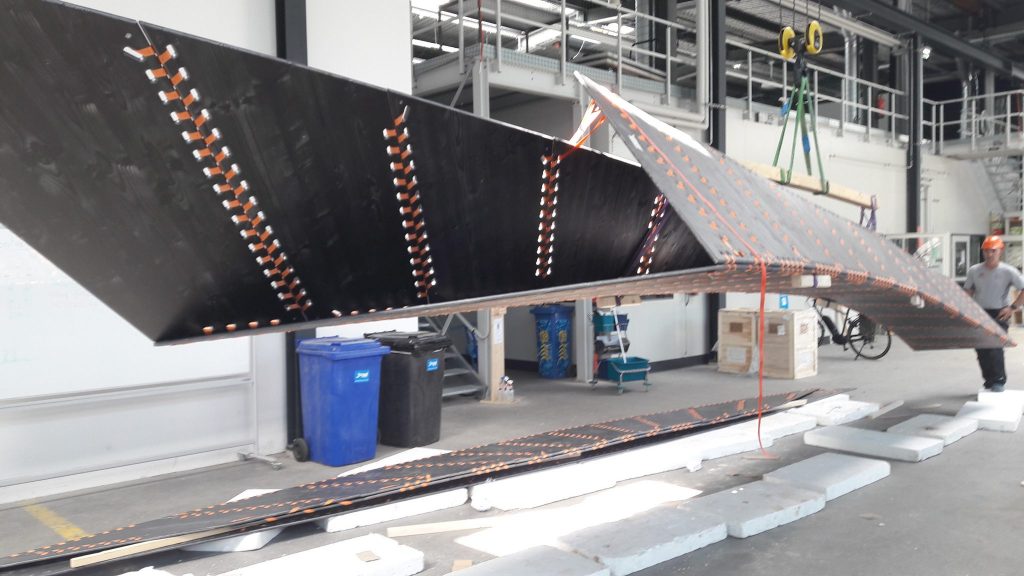
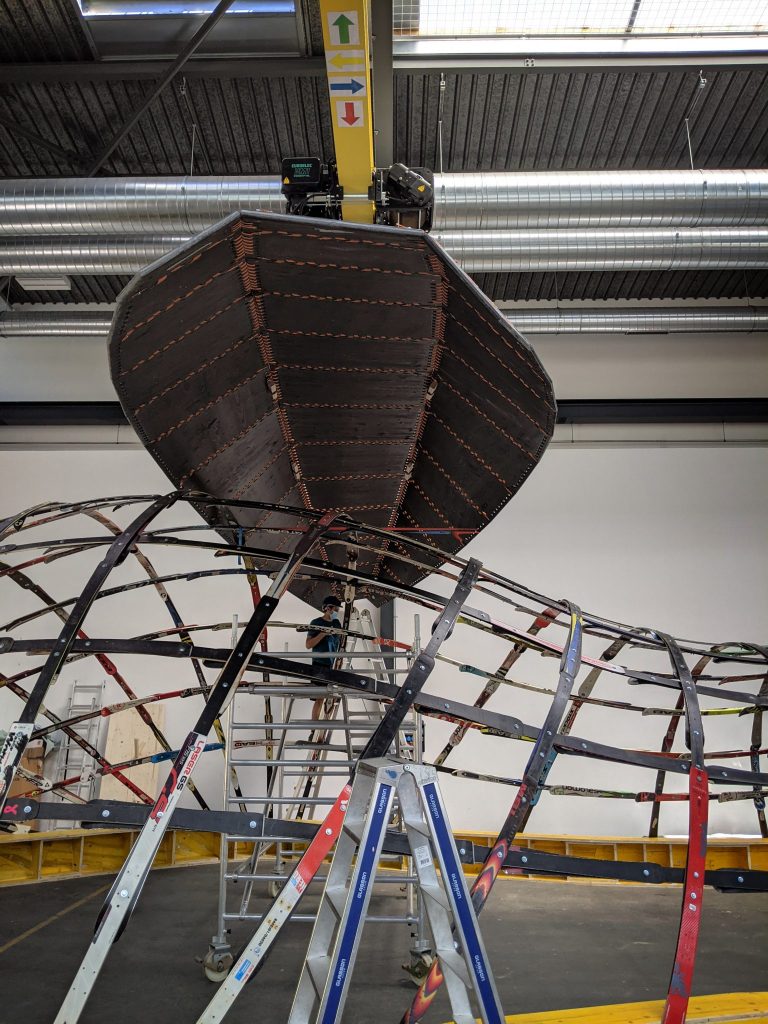
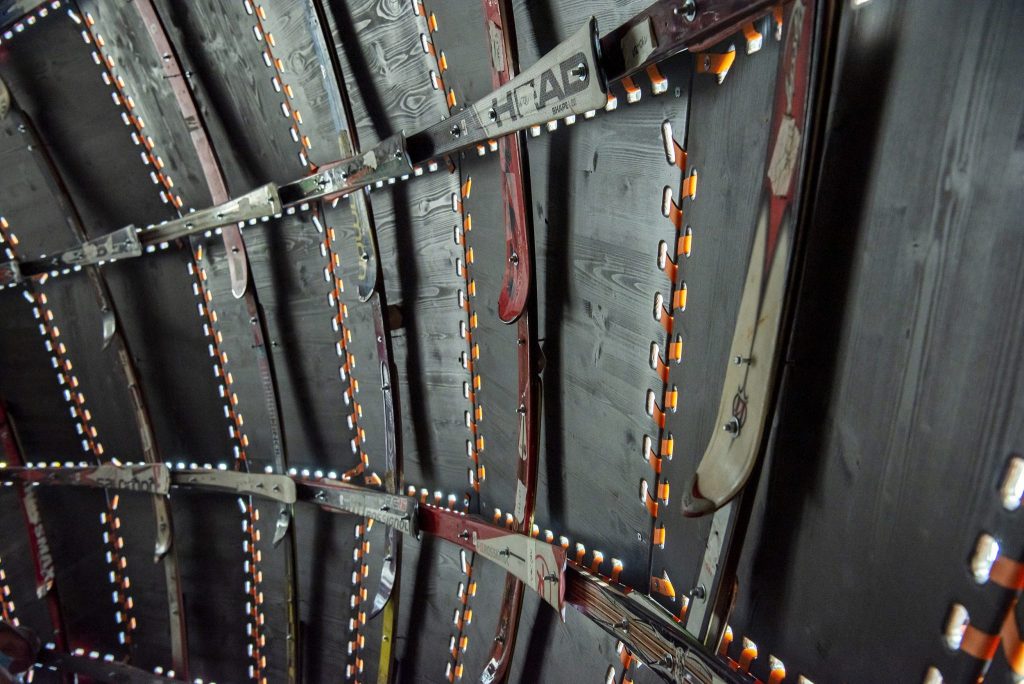
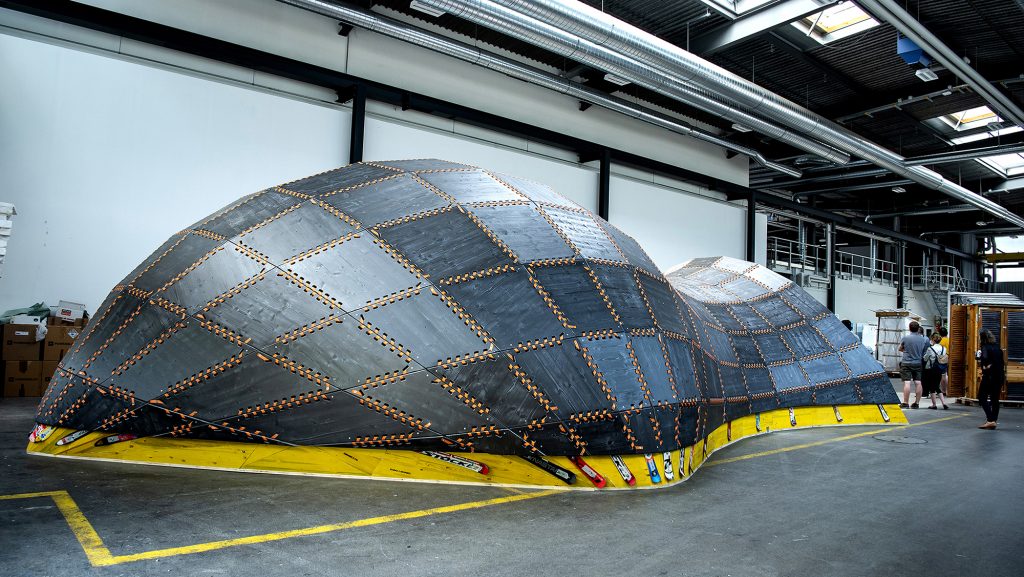
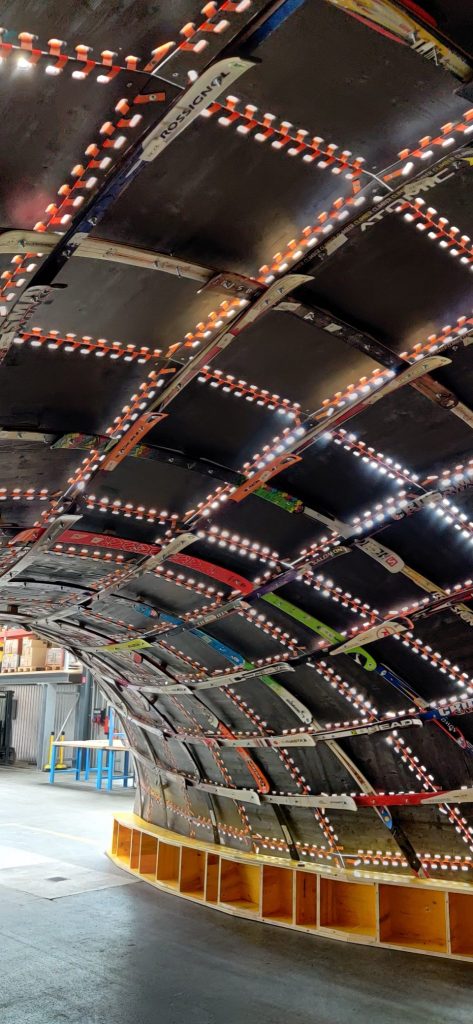
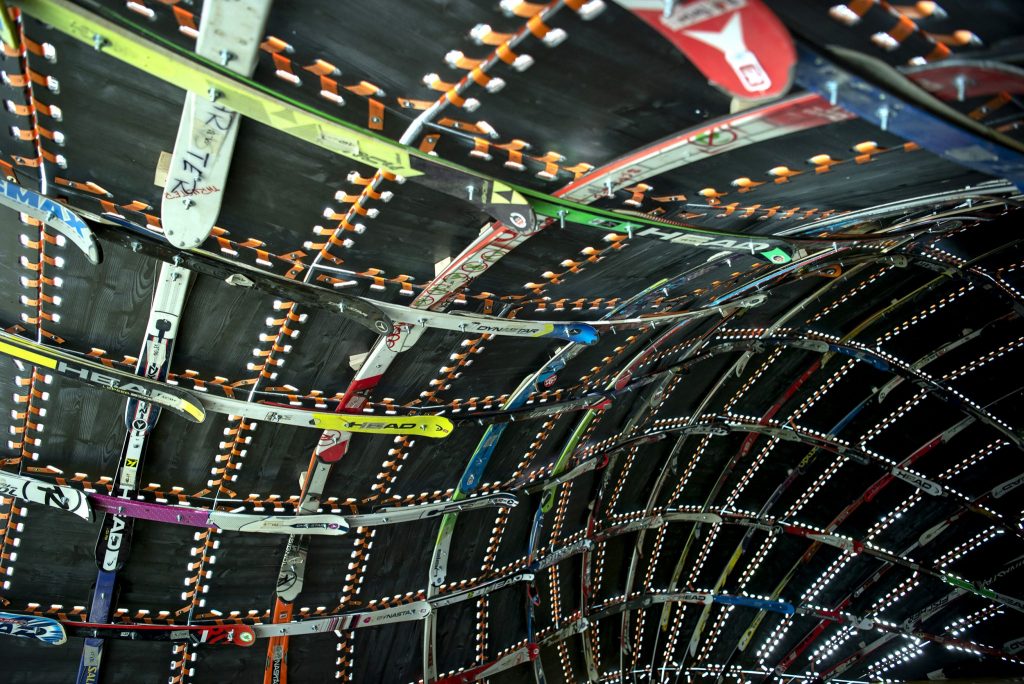
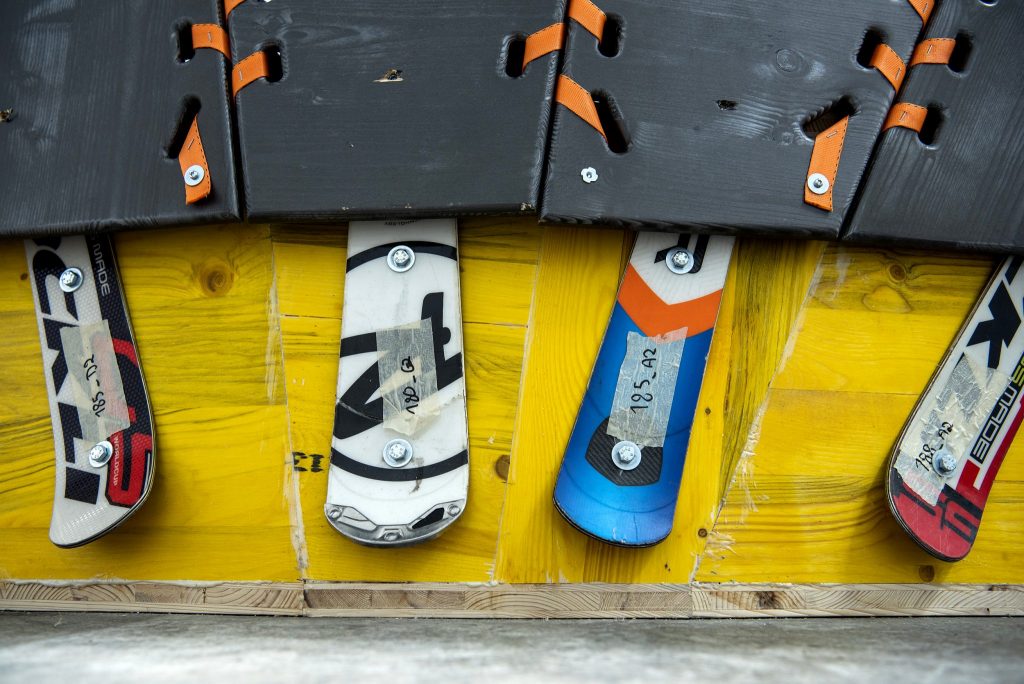
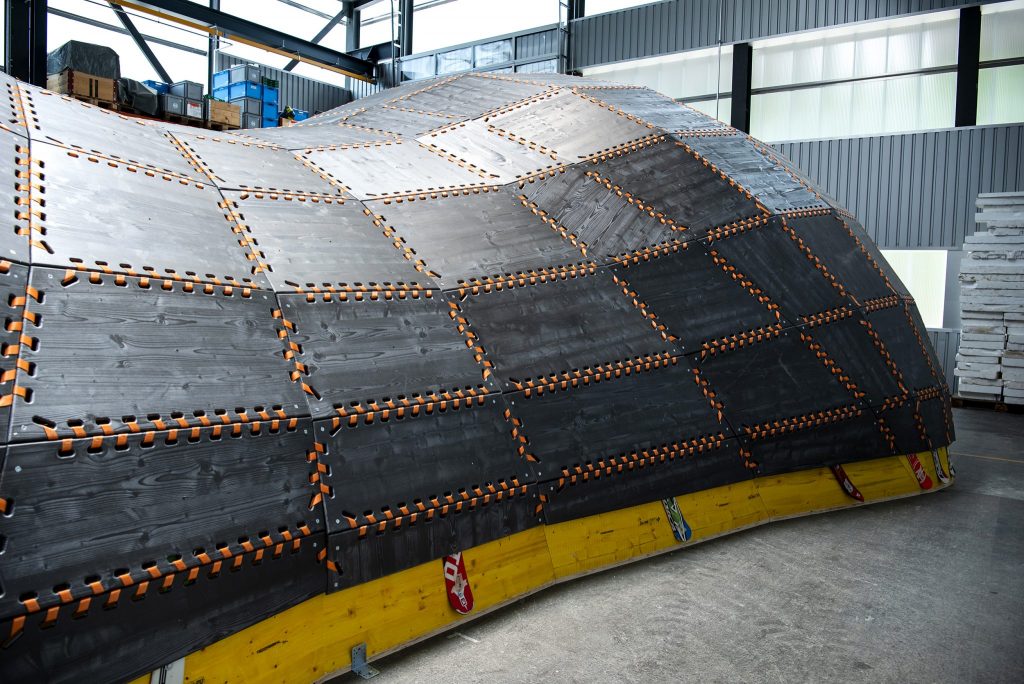
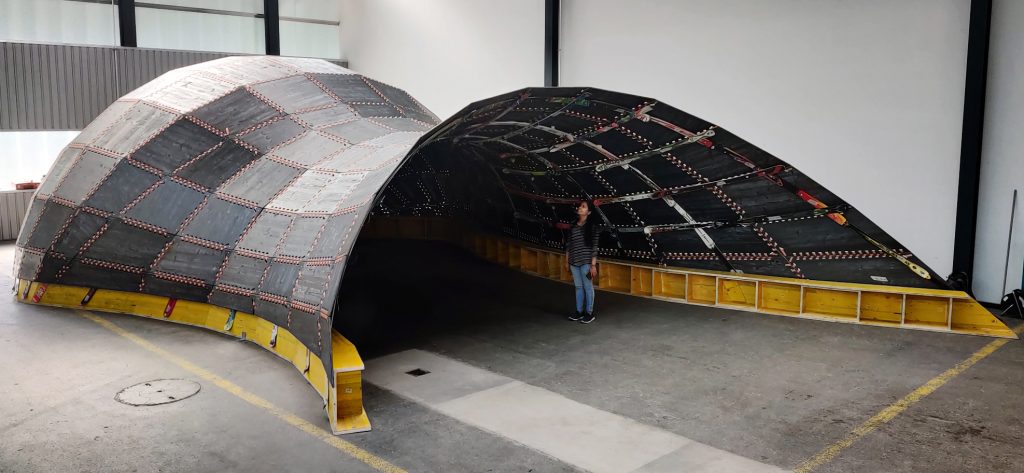
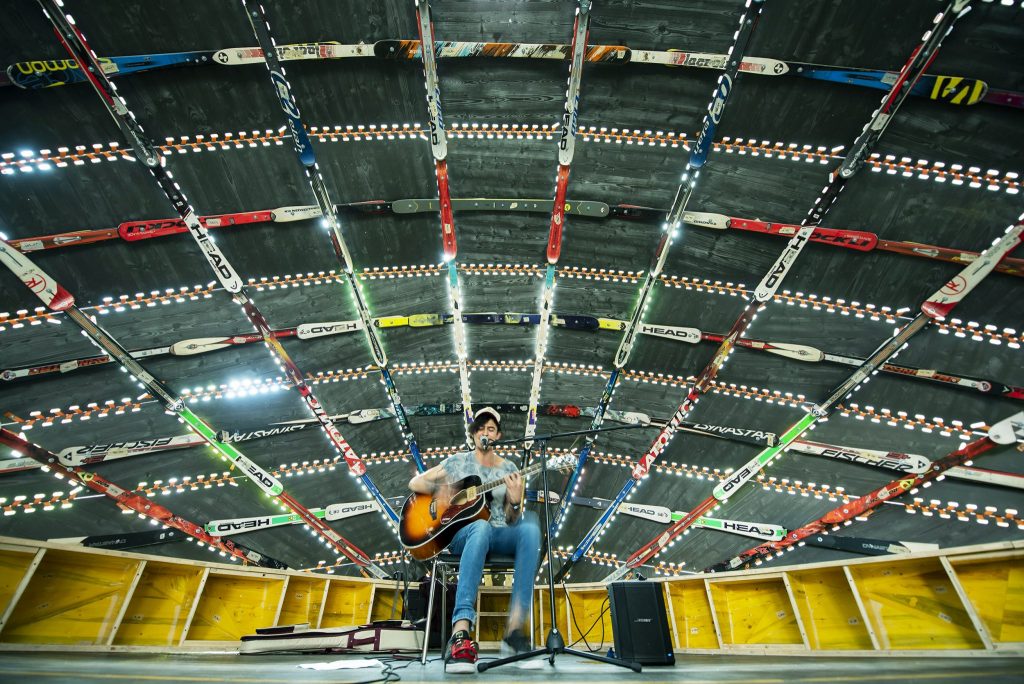
Related publications:
- Discrete Voss surfaces: Designing geodesic gridshells with planar cladding panels, Automation in Construction 2022 (detailed record)
- Generation of elastic geodesic gridshells with anisotropic cross sections, International Journal of Space Structures 2021 (detailed record)
- Voss Surfaces: A Design Space for Geodesic Gridshells, Journal of the International Association for Shell and Spatial Structures 2020 (detailed record)
The ski gridshell (spring 2017)
Introduced as a proof of concept, this 11*6m² elastic gridshell from 200 reclaimed skis demonstrates that the technology embedded in discarded sport equipment can perform better than conventional materials in specific high-demanding structural purposes. The pavilion has been presented at the first Architecture Biennale in Lyon, summer 2017, at the 2017 international symposium of the IASS, and is currently on display in French ski resorts.
Elastic gridshells are special structures that can be assembled without scaffolding. They gain their rigidity thanks to the permanent bending of their elements after being pre-assembled on a flat surface. Pioneered by Frei Otto and Ted Happold in Mannheim (1975), elastic gridshells have since been then commonly built with small, high-strength timber laths.
Sometimes, reclaimed material from other sectors are good alternatives to conventional material. Skis, as many other high-end sport equipment, have a very short lifespan and cannot be cheaply recycled because of their composite nature. However, even after years of second-hand cycles, skis maintain valuable mechanical properties: high curvature capacity in one direction and great rigidity in the transverse direction.
On the one hand, skis greatly vary in stiffness. On the other hand, the geometric stiffness of the shell is not uniform. Part of the designer’s role is therefore to assign the diverse skis at the most appropriate locations on the gridshell, in order to ensure overall stability and minimize deflections.
- Corentin Fivet (project investigator)
- Sofia Colabella (gridshell designer & worksite manager)
- Bernardino D’Amico (form-finding)
- Claude-Alain Jacot (procurement & construction)
- Jan Brütting (detailing & construction)
- Valeria Didonna, Jacopo Orlandi, Julieta Moradei (construction)
- Endrit Hoxha (life-cycle analysis)

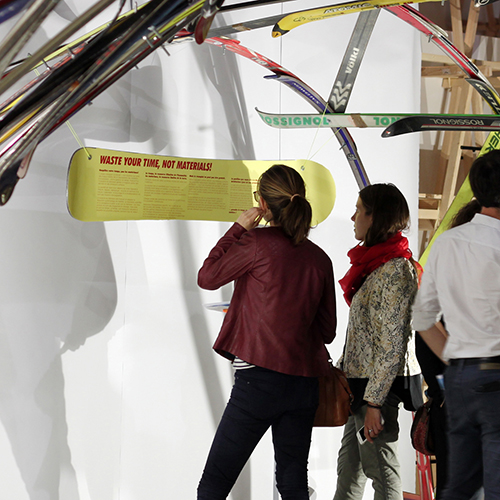




Please note that the publication lists from Infoscience integrated into the EPFL website, lab or people pages are frozen following the launch of the new version of platform. The owners of these pages are invited to recreate their publication list from Infoscience. For any assistance, please consult the Infoscience help or contact support.
Structural Design with Reclaimed Materials: an Elastic Gridshell out of Skis
This paper presents the design and construction of a 36m2 gridshell, the rigidity of which is achieved through the bending of an initially flat grid of 210 reclaimed skis. The generated waste for its production is near zero as it is mostly built from discarded material. Its construction process is such that it can be disassembled and reassembled multiple times without scaffolding and by means of traditional tools only. After a brief introduction on the need for reducing embodied carbon and waste in structures through reuse, the paper sets up the constraints that have driven the definition of the pavilion, the main one being the extension of the lifetime of high-performance sport equipment by reclaiming their intrinsic mechanical properties. The paper then details the encountered unusual aspects in the design process and how they have been overcome – i.e. sporadic material supply, categorization of mechanical properties, physical alteration of these properties, and uncertainties in the numerical modelling of both the structural analysis and the construction process. Eventually, we conclude that reclaimed skis as a material have the potential to be as good as conventional timber when designing elastic gridshells. A series of future directions for this emerging field of research are also laid out.
2017. IASS Annual Symposium 2017 “Interfaces: architecture.engineering.science”, Hamburg, Germany, September 25-28, 2017.

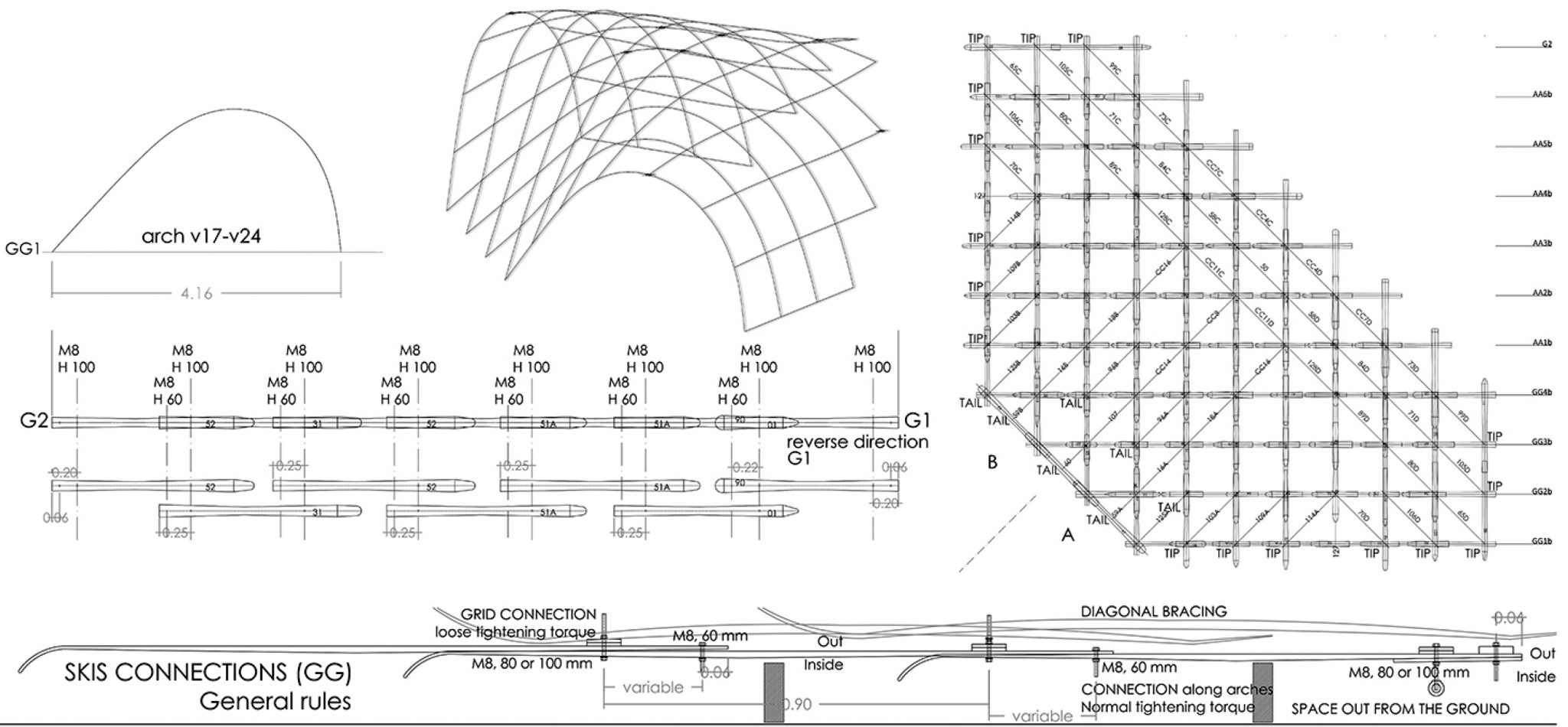
Other publications:
- EPFL Mediacom (video and news)
- Experimental investigation of beams under coupled bending and torsion
IASS conference 2019 (detailed record)